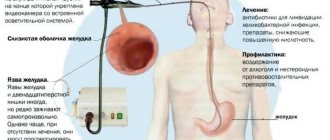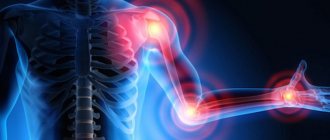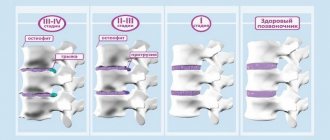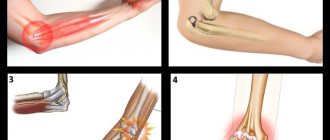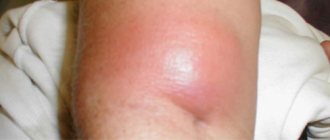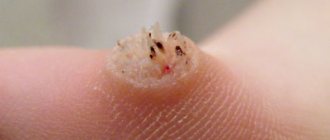Achievements of technological progress in the 21st century have led to the fact that the majority of the population of developed countries spends their working day in a sitting position. Our physical activity has decreased to almost a minimum, and the amount of daily stress has increased, in all likelihood, to its maximum. This situation negatively affects our health and, first of all, the condition of the spine. There are countless people who have back problems, but even more people complain of constant or recurrent neck pain.
Its causes can be very diverse, and their prevalence is associated with the structural features of the cervical spine itself.
This part of the body consists of seven rather thin vertebrae. Of all the sections of the spine: lumbar, thoracic and cervical, the latter is the least massive, but the most mobile: its functions include ensuring unhindered turns of the head. Constant and significant load on the neck determines the frequency of pain.
Pain in the neck is commonly called “cervicalgia”
.
This sign can signal the development of various ailments, so the first thing a person who is worried about a sharp pain in the neck
is consult a doctor. The specialist, by comparing other symptoms, studying the necessary tests and medical history, will make a diagnosis.
Cervicalgia and cervicago
Pain in the neck area is divided into two types:
- Cirvicalgia is a continuous spasm in one place. Appears gradually, its intensity varies. If your neck constantly hurts, and in the same place, you need to go to the hospital; a serious illness may be developing.
- Cervicago is sudden pain that comes and goes quickly. The cause may be too sudden movements of the head or staying in the same position for a long time.
During the attack, coordination is impaired, and painful urges are felt in other parts of the body.
Manual therapy
If pain in the neck and head is caused by vertebral artery syndrome or the development of the consequences of trauma to the cervical spine, then they can be eliminated using manual therapy techniques. With the help of manual therapy, you can significantly increase the number of movements in the spine, help improve arterial blood supply to the brain, and prevent compression of the arteries during body movements.
If vertebral artery syndrome and the consequences of injury lead to severe headaches and other unpleasant symptoms and manifestations, then surgical treatment is indicated (the operation is performed under local anesthesia or complete anesthesia).
The main problem for patients is to find a good chiropractor. Today, many unqualified doctors offer assistance in the field of manual therapy, therefore, before undergoing procedures, it is recommended to read reviews about the specialist.
Cervical osteochondrosis
Osteochondrosis is a disorder of joint joints. The disease develops mainly in people who lead a sedentary life and eat improperly. Hereditary predisposition also plays an important role . People suffering from osteochondrosis experience dizziness, noise in the eardrums, and stiffness in the limbs. The back of the head hurts, there is a burning sensation between the shoulder blades. They often complain that the spine in the neck area hurts. It becomes difficult to turn your neck, movements are accompanied by a crunching sound. Possible numbness.
- Recommended reading: Neck hurts and radiates to head
Aching pain in the neck indicates the development of this disease. The neck hurts on the left or right side - most likely osteochondrosis.
Pain in the cervical spine is accompanied by this disease. If you consult a specialist in a timely manner, it can be easily cured.
Symptoms
Symptomatic manifestations of SCH in advanced stages are very clear. Let's consider where a person usually hurts, what kind of unpleasant sensations bother him, and where they go.
- Neck pain - cervicalgia. In the initial stage of the disease, they are weak and dull, felt after sitting in one position for a long time. After rest they pass. As the changes progress, they become chronic, aching, more intense and lasting. When nerve endings are pinched, they develop into acute attacks. The pain is felt deep in the tissues of the neck and often radiates to the scapula, back, shoulder, collarbone, depending on the level of the roots.
- Headaches – occur mainly at night or after physical activity. Over time, from the back of the head they move to the parietal and temporal parts of the head and become pulsating. In the later stages they are bursting in nature.
- Pain in the throat and face - in the form of spasms in the throat and tingling in the face. Intensifies when swallowing. Very strong throbbing pains are felt in the eyes.
The following signs also indicate the progression of the disease::
- tension in the head and neck;
- limited movement in the neck;
- noise, ringing, squeaking in the ears;
- in second place after pain is dizziness;
- increased fatigue;
- difficulty concentrating at work;
- periodic numbness of the tongue and lower jaw.
Severe pain in the back of the head
Based on the level of pinched roots, pain is localized in the following places::
- level 1 vertebra of the neck - pain occurs in the lower part of the crown;
- 1st and 2nd vertebrae - in the crown and back of the head;
- 2 and 3 - descends from the back of the head to the neck;
- 3 and 4 vertebrae - in the lower part of the back of the head;
- 4 and 5 - at the very bottom of the head, extending to the shoulders and collarbones;
- 6th vertebra – pain at the bottom of the head is accompanied by breathing problems (feeling of lack of air);
- 6-7 vertebrae – pain surrounds the entire head and radiates to the heart.
The appearance of occipital neuralgia can contribute to:
- spasms of the neck muscles;
- proliferation of osteophytes;
- pinching and compression of the occipital nerves, spinal nerves;
- intracranial pressure hypertension.
Dizziness
Frequent and severe dizziness is an early symptom. They can occur with rapid movements of the neck and in the morning after waking up. Accompanied by darkening of the eyes, disturbances in orientation and balance. Dizziness is provoked by brain hypoxia, when compressed vessels are unable to supply the brain with sufficient nutrition and oxygen.
Noise in ears
Cervical osteochondrosis (COX) often provokes noise, ringing, congestion in the ears and pain. Such symptoms of osteochondrosis occur in 55% of patients.
Tissue hypoxia and increased intracranial pressure disrupts venous outflow with impaired nutrition of the middle and inner ear. As a result, the entire vestibular apparatus suffers. All this is complemented by narrowing of the arteries. In compressed vessels, blood acquires a vortex-like movement. The ear perceives these sounds as noise.
Crick
The neck can hurt from excessive physical activity: after training, for example. The main symptom of a sprain is acute pain in the neck. The damaged area swells, it becomes impossible to turn the head, it may take an unnatural position, and the patient risks fainting. To make it easier, you can take a pain reliever, apply a cold or hot compress, or massage the sprained area. It is not recommended to lie on your stomach - in this case, the head will be turned to the right or left, and the tense ligaments may not be able to withstand it. It is better to avoid physical activity for several weeks. When the pain subsides, you can begin to stretch your neck by tilting it to the sides.
- Carefully study the information: neck diseases and their treatment
Diagnostics
Instrumental studies are carried out:
- The most common diagnosis is x-ray . Pictures are taken in different projections. This makes it possible to identify a decrease in disc height, the presence of protrusions, hernias and osteophytes.
- In case of complications or at an early stage, when changes are minimal, CT or MRI .
- Doppler examination - shows the condition of the vertebral arteries, their narrowing and problem areas.
Spondylosis
Cervical spondylosis is a serious disease that can lead to disability and requires immediate consultation with your doctor. Spondylosis can be an advanced form of osteochondrosis. The disease occurs mainly in older people, as well as in athletes as a result of injuries. Unpleasant sensations in the back of the head and collar area become permanent.
Another signal is throbbing pain in the left neck. There is a feeling of stiffness and discomfort when turning your head.
There are many opinions about how to treat cervical spondylosis. The main thing is to eliminate inflammation and pain. Drug therapy, physiotherapeutic procedures in combination with therapeutic exercises will help restore performance and improve the general condition of the body.
Special cases
Degenerative diseases
Osteochondrosis, or, in other words, degenerative disorders in the intervertebral discs, leads to a person constantly having neck pain. This is usually a mild aching pain, which is often accompanied by a feeling of numbness and aching in the shoulder girdle and head.
Osteochondrosis of the neck causes prolonged aching pain and the development of vertebral artery syndrome
The collar zone affected by osteochondrosis can cause the development of cerebral artery syndrome. With a decrease in intervertebral distances in this area, compressive damage occurs to the vertebral arteries passing through the openings of the transverse processes of the cervical vertebrae. Pressure on the vessel causes a decrease in blood flow to the brain, causing dizziness, decreased vision and hearing. On the other hand, mechanical irritation of the artery with pressure from the vertebrae causes a reflex spasm, which manifests itself as a burning, throbbing pain in the head.
Treatment
If your neck constantly hurts due to osteochondrosis, then therapy begins with eliminating the pain syndrome. The second mandatory direction of treatment is to stop the degenerative processes in the cervical vertebrae.
Pain relief can be achieved using the following groups of medications:
Neck pain on the left side
- non-steroidal anti-inflammatory drugs - directly block the cascade of mediators that signal pain (Diclofenac, Ibuprofen, Nimesulide, Meloxicam);
- muscle relaxants – eliminate muscle spasms that reflexively arise from severe pain (Sirdalud, Midkalm;
- sedatives – calm and inhibit the nervous system and the transmission of pain impulses, including (valerian, antidepressants, sleeping pills);
- vasodilators - help eliminate vertebral artery syndrome and the pain associated with it (Pentoxifylline, Eufillin, Papaverine, Cinnarizine, Drotaverine).
To eliminate the cause of neck pain in osteochondrosis, chondroprotective drugs are prescribed that prevent the destruction of cartilage and vertebrae - Dona, Structures, Artra, Teraflex, Alflutop, as well as multivitamin mineral complexes - Milgamma, Neuromultivit, Komlevit, Vitrum complex.
Pain treatment also consists of exercise therapy, physiotherapy, massage, traction, reflexology and taping therapy. During an exacerbation, in order to relieve pain, the patient is recommended to wear a special collar that protects the neck from excess mobility.
Muscle pain
Pain in the neck can occur due to inflammation of the neck muscles, called myositis. Such pain should be distinguished from neuritis (inflammation of the nerve trunks with sensitivity disorder) and pain caused by osteochondrosis. Myositis occurs suddenly, after exposure to predisposing factors - hypothermia, vibration, prolonged overexertion, especially with prolonged repetitive movements of the same type.
Cervical myositis: A – points of greatest pain, B – area of pain distribution, C – receiving an anesthetic massage
Cervical myositis is characterized by acute pain that occurs when the inflamed muscle contracts. The sharp severity of pain leads to difficulty in performing certain types of movement. Usually the long neck muscles on the anterolateral surface or the sternocleidomastoid muscles hurt, which, when contracted bilaterally, pull the head back, and when contracted unilaterally, turn it. Also often inflamed are the deep muscles that surround the spine and move the entire neck and back.
When palpating the muscle, its increased tone and dense nodular areas are noted. Disruption of microcirculation and local trophism leads to the gradual replacement of myocytes with connective tissue. As a result, the neck muscles weaken, their symmetry on the sides of the spine is disturbed, “torticollis” may appear, and it is difficult for the patient to keep his head straight. You can learn more about why the back of your neck hurts here.
Cervical myelopathy
Myelopathy occurs after narrowing of the spinal cord canal. Pain in the cervical spine signals the development of myelopathy. Those suffering from myelopathy feel unwell and weak, they often have a feeling as if an electric current is flowing through their limbs, speech slows down, it becomes difficult to take steps, and coordination is impaired. The disease occurs after falls from great heights and accidents. The patient wears a soft cervical collar and undergoes physiotherapy and strengthening exercises.
Why does my neck and head hurt?
To understand why the cervical spine and head hurt, you need to understand the main causes.
Cervical chondrosis
Most often, this disease is observed in older people, when the intervertebral discs wear out and gradually collapse. The causes of this pathology are not fully understood, but its symptoms occur suddenly when the head is sharply turned to the right or left. With chondrosis, the neck hurts greatly and often radiates to the head, after which the pain intensifies.
Some patients experience stiffness in movement and muscle tightness. On palpation, strong muscle tension is felt in problem areas. Constant discomfort and lumbago lead to insomnia, increased irritability, general weakness and frequent mood swings. To reduce the manifestations of pathology, the doctor may prescribe muscle relaxants that will reduce muscle tone.
Osteochondrosis
Every year there are more and more patients with osteochondrosis. This is due to a sedentary lifestyle, sedentary work, and spinal curvature. Causes may also include genetic predisposition and obesity. With cervical osteochondrosis, a person has pain in the neck and head at the back in a certain place. This phenomenon is caused by compression of the vertebral artery by bone formations.
Over time, the pain syndrome can spread to the forearm and chest, with the cervical vertebrae characteristically crunching. Accompanying symptoms of the disease are periodic nausea, dizziness, numbness of the limbs and malaise.
Meningitis
Pain that turns into numbness and tingling of the neck muscles may indicate inflammatory processes in the spinal cord and brain. Diseases such as meningitis can also be recognized by the following symptoms:
- a sharp increase in body temperature;
- pain even with slight movements;
- periodic vomiting and feeling of nausea;
- increased sensitivity to light rays;
- insomnia;
- high irritability.
In case of such symptoms, a person should immediately consult a doctor to provide qualified medical care. If these manifestations are ignored, death is possible.
Neuralgia
Pain in the back of the head indicates the presence of neurological diseases associated with a sedentary lifestyle, inflammatory processes and depressive states. The discomfort is especially pronounced when turning the head in a certain direction. The pain may radiate to the back of the head, slightly above the neck, during palpation and head movements. This may be unilateral inflammation to the left or right of the spinal column.
Neuralgia is also called an occupational disease of office workers who often sit in front of documentation or a computer. A person may develop this disease due to hypothermia of the extremities or cervical region, the presence of diabetes mellitus and microtrauma of the spine.
Migraine
A common neurological disease that affects a large number of people. This pathology applies to both adults and children. From the age of 15, a child may suffer from episodic or regular severe attacks of headaches. The cause is compression of the vertebral artery and impaired blood circulation in the brain.
In this case, patients may complain of increased intensity of pain during physical activity, deterioration of audibility and visibility, and constant weakness. In some cases, there was severe pressure on the eyes, which did not go away even after taking painkillers.
As a rule, migraines occur more often in women and are accompanied by characteristic symptoms. During severe attacks, the patient experiences temporary loss of vision, difficulty speaking, and tingling in the face
Whiplash
The term whiplash is used to describe pain resulting from damage to soft tissue. Damage occurs due to sharp extension with further flexion and vice versa. Sharp pain in the neck (any area) after a fall, fight, or accident may indicate a whiplash injury.
The ligaments are damaged - the head takes on a protruding position, and cervical lordosis is lost. After an injury, an x-ray examination is required. The attenuation of the disease occurs after 1-6 months.
Diseases that cause pain in the cervical spine
Pain in the neck can occur for various reasons, the most common of which are:
- Pathological changes in the spine - osteochondrosis, osteoarthritis, scoliosis, neuralgia, intervertebral hernia.
- Injuries to the vertebrae, discs, joints, ligaments and muscles.
- Immune pathologies of the spine.
- Infectious diseases of the musculoskeletal system.
- Benign and malignant tumors.
- Intracranial hemorrhages, tumors and abscesses.
- Physical activity, overwork during training, heavy lifting.
Nature of pain
Pain in the neck can be shooting, pulling, stabbing, throbbing. When muscles move and tense, they become stronger. When they appear, you can bend and turn only with your whole body, avoiding turning your head .
The pain appears in the back of the neck and can radiate to different parts of the body and head.
Depending on the location, its types are distinguished:
- Cervicalgia – when it is limited only to the neck area.
- Cervicocranialgia – with irradiation to the head.
- Cervicobrachialgia - when it radiates to the arm.
Associated symptoms
In addition to pain in the cervical-scapular region, other alarming symptoms appear:
- spasms of the cervical muscles;
- noise and ringing in the ears;
- dizziness and fainting;
- recurrent, throbbing headache and hypertension;
- head tremors, shortness of breath and various cardiac pathologies.
Pathology of internal organs
Severe neck pain often portends pathology. If there is pain in the right hypochondrium, radiating to the neck on the right side, the development of cholecystitis is suspected. If the cervical temples hurt in the morning, it looks like hypertension. The pain in such cases is referred and comes from the head, heart, and esophagus. Myocardial infarction and angina are often accompanied by pain in the chest, shoulders and arms.
Patients who survived similar illnesses complained that their neck hurt on the left. Pain in the neck on the right, cramps in the thigh on the same side indicate the development of cholecystitis. Pain in the front of the neck gives rise to suspicion of a disorder of the thyroid gland, esophagus, larynx or pharynx. Perhaps local neuritis develops - damage to the nerves. This usually occurs after poisoning with chemicals, for example, alcohol.
Restless pain in the cervical spine is a harbinger of developing pathology. In this case, the pressure increases greatly. Pain in the neck on the right with limited ability to move the head is tormenting during meningitis.
Painful sensations on the side are a consequence of the expansion of the tumor in the brain. You should seek help immediately. Pain in the neck on the front right or left may indicate the presence of pharyngitis, laryngitis, lymphangitis or any other disease associated with inflammation of the viscera.
Pain in the cervical spine - perhaps the process of developing meningitis, tuberculosis, osteomyelitis is underway. A harmless disease that can be easily treated, vegetative-vascular dystonia can also be accompanied by ailments. Pain in the cervical spine radiates to the limbs, back, pressure surges, shortness of breath, and lethargy are observed.
Juvenile rheumatoid polyarthritis is characterized by piercing pain in the neck. It gets worse at night.
Doctor, what's wrong with my neck?
If you ask a doctor this question, you may not get an answer right away - the doctor must reliably find out what caused the problem with the cervical spine.
Therefore, communication with a good doctor always begins with a consultation and survey, and only after that the necessary studies and tests are prescribed.
Pain in the neck area can have a different nature and location. Based on the nature of the pain, it can be classified as acute, pulling, or throbbing.
In some cases it occurs suddenly, in others the patient has constant neck pain. Depending on which structures are affected by the disease, sensations can be deep or superficial.
Localization also matters:
- When the left side of the neck hurts, one can suspect either neuralgia of the right nerve roots, or left-sided problems of bone and muscle tissue;
- Neck pain in the front is usually associated with the larynx and tonsils. It is best to exclude viral inflammatory processes and then look for causes in deeper tissues;
- The collar area suffers from pain if the work and rest regime is not observed, especially in representatives of “sedentary” professions;
- Severe pain is localized in the back when muscles are pinched or there are problems with the vertebrae or intervertebral discs.
Causes of pain
The neck consists of a record number of tissues. Here are the bones of the spine, the cartilage of the intervertebral discs, and the nerve bundles; large blood vessels, smooth muscles of the esophagus and the cartilaginous skeleton of the trachea, lymph nodes, glandular tissue of the thyroid gland and muscles that control head movements. Any of these tissues may harbor a source of pain.
Bone tissue of the spine
In the case of pain in the cervical spine, the causes lie in skeletal pathologies. Painful sensations can occur with arthrosis, osteoporosis, osteochondrosis, hernias, tumor and pathological processes in the bones. With these diseases, the neck usually hurts on the side where the disease is comfortably located.
Diseases of the cervical spine must be treated immediately. When neglected, even the simplest and most painless pathological processes can develop into serious problems.
Cartilage tissue of the spinal column
Cartilage is a resilient and elastic substance that protects the bone surface from friction and destruction. If there is insufficiency of cartilage or its incorrect position (protrusion, hernia), neck pain occurs, the causes of which are best sought together with a doctor.
Do you want to get rid of neck pain?
Doctors recommend physiotherapy massagers to relieve neck pain. Due to low-frequency vibrations, such a massager improves blood circulation in the cervical region and relaxes the neck muscles. It also relieves pain due to osteochondrosis and stagnation. There are no contraindications for use.
You can buy such a massager in the official store HERE. Click on the link and buy a massager with a 50% discount!”
Other reasons
Often pain in the neck area on the right is a consequence of banal lumbago. Lumbago or lumbago is a contraction of the neck muscles. It is harmless and goes away on its own after a couple of weeks. Most often it manifests itself due to a draft, the pain spreads to the head and chest. The neck on the left or right hurts severely - perhaps the person simply “rested” on this side. Bodily passivity harms physical condition and impairs the functioning of the vessels of the cervical spine. During this kind of ailment, it is enough to change the position of the body.
- Perhaps you need information: what to do if your neck hurts and it hurts to turn?
Many obese people often experience neck pain. The spine and cervical vertebrae cannot cope with excess weight, they have a huge load on them, and they begin to actively resist.
Stress and psychological tension become the causes of painful sensations. Emotional outbursts and tension often cause pain in the back of the neck. It, like any other part of the body, has many nerve endings. If your shoulders also hurt, you feel tingling and numbness, a nerve is pinched. The pain will subside after injection or taking an anesthetic drug.
Pulling muscles - perhaps you should diversify your day with walks in the fresh air. Pain on the right side in a healthy neck - the person is simply hypothermic.
Main reasons
There are many etiological factors that cause neck and head pain. Determining the exact cause of these symptoms plays an important role. This will allow you to prescribe the most effective treatment tactics.
Cervical osteochondrosis
This is one of the most common diseases, during which unpleasant sensations are noted in the head and neck. The pathology is accompanied by characteristic changes in the cartilage tissue between the vertebrae.
These disorders contribute to the narrowing of the intervertebral space. Nerve endings are pinched, which causes pain. Compression of blood vessels leads to oxygen starvation of brain cells, which causes headaches.
In addition, the following symptoms are characteristic of osteochondrosis:
- spread of pain to the upper limbs, chest and shoulder girdle;
- a characteristic crunch that appears when tilting or turning the head;
- stiffness of movements;
- general weakness;
- frequent dizziness;
- impaired coordination of movements;
- decreased sensitivity of the distal limbs and muscle fiber tone.
Important information
As the disease progresses, the clinical picture becomes persistently pronounced. The lack of timely treatment contributes to the addition of inflammatory processes to existing pathological changes.
Myogelosis
This pathology is accompanied by stiffening of the neck muscles, which occurs as a result of poor posture, constant stress, or systematic back pain. Regular physical overload also contributes to the development of the disease.
When the disease occurs, patients experience pain in the neck and occipital part of the head. The clinical picture is accompanied by frequent dizziness, stiffness of movement and pain when turning the head.
Cervical spondylosis
This disease is most often observed in people over 50 years of age. Its essence lies in the growth of bone tissue in the area of connection of the first cervical vertebra with the second. As a result, there is a decrease in the functionality of this part of the spinal column, as well as destructive processes in the vertebrae, which contributes to the development of cervical pain syndrome.
The pain radiates to the back of the head, shoulders, ears and eyes. It is accompanied by a crunch in the neck when performing head movements. The upper limbs are subject to tingling and impaired muscle tone. The likelihood of pathological processes occurring increases with heavy physical exertion, regular hypothermia, or the presence of inflammation in the joint capsules.
Cervical migraine
This pathology develops when a person has osteochondrosis, spinal column injuries or atherosclerosis. If left untreated, cerebral circulation disorders develop, which negatively affect the patient’s health.
The disease can lead to problems with cognitive functions, paresis and paralysis. In addition, the likelihood of ischemic stroke increases significantly. Symptoms of the pathology include:
- the presence of shooting, pulsating and bursting pain in the cervical spine with irradiation to the head area;
- the duration of pain ranges from 5-10 minutes to 2-3 hours;
- migraines, dizziness;
- gastralgic symptoms.
Impaired brain function, as well as regular pain in the head and neck, reduces the patient’s performance and social activity. The disease can cause psychosis, neurosis and depression.
Occipital neuralgia
Often, unpleasant sensations localized in the back of the head and neck indicate damage to fibers in the occipital nerve. Cephalgia can be unilateral or chronic. They occur abruptly and intensify in the presence of bright lighting.
This disease occurs in people who lead an inactive lifestyle. Patients with inflammation of the meninges, insulin-dependent type of diabetes mellitus and traumatic lesions of the spinal column are also susceptible to the disease. The risk of developing pathology increases with emotional overload, mental disorders and hypothermia.
Rheumatoid arthritis
If a person has rheumatoid arthritis, the pain syndrome is paroxysmal in nature. Irradiation of pain occurs in the chest, upper limbs and back.
Meningitis
Inflammatory processes affecting the membranes of the brain are the result of the influence of infectious agents. Patients experience a sharp increase in temperature, intense pain, cachexia, lethargy, and excessive excitability.
Over time, nausea and vomiting join the clinical picture of the disease, which does not bring relief. A specific sign of meningitis is tension in the neck muscles. This forces the patient to take a forced position with his head thrown back and his legs tucked towards his stomach. Often a characteristic rash appears on the patient’s body.
Nervous tension
If your neck hurts and radiates to your head, then the causes of pain include emotional overload, mental disorders or depressive states. They contribute to the development of blood flow disorders in the brain. Unpleasant sensations are localized in the back of the head and have a dull, aching character with periodic pulsations and lumbago.
Injuries
Pain syndrome is characteristic of lesions of the intervertebral discs, joint diseases and sprains of muscle fibers in the neck. As a result, a person experiences discomfort in the cervical vertebrae, which can radiate to the head area.
The pain is single or constant. Their severity depends on the size and location of tissue lesions. In addition, migraines are characteristic of the post-traumatic period of damage to the skull. All pathologies are characterized by a number of similar signs, including increased discomfort after sleep, as well as prolonged stay in a static position.
Treatment
Those who are constantly bothered by the cervical region should consult a specialist. This is very important, especially if the temperature rises with severe pain. When your neck hurts for three days, you need to sound the alarm. Treatment for a neck that hurts can only be prescribed by a specialist.
- Be sure to read: yoga for the neck
Doctors usually prescribe medications. It is recommended to lubricate the bothersome parts of the neck with preparations with a warming effect. Permanent pain can make a person irritable: the doctor prescribes sedatives and antidepressants. Pain in the neck on the right, left, front, side and back can be relieved by applying a heating pad to the affected area or wrapping it in a warm scarf.
Massage is a mandatory health procedure. You can do it yourself. If the front of your neck hurts, for example, gently stroke and rub its surface, trying not to touch your Adam’s apple. Blood circulation will improve, and pain in the cervical spine will no longer bother you.
It is recommended to treat severe pain in the neck with warm compresses. In such cases, a person needs complete rest, and the pain in the neck on the right or left will subside in a matter of minutes. If the situation is serious, a professional who knows how to treat neck pain, such as a trained physical therapist, should take over.
- We recommend reading: exercises for stretching the cervical spine
Bruises and sprains are relieved by cold compresses. In medical practice, acupuncture and recreational exercise are often used, especially for persistent neck pain.
In especially severe cases, patients are operated on, but this is the exception rather than the rule. If treatment of the cervical spine is successful, you can get rid of unpleasant sensations in a few months.
Types of pain
Neck pain is characterized by various types and characteristic sensations. The neck in the human body performs an important motor function, making it possible to turn the head and increase visibility. It also connects the head and spinal column, ensuring an upright posture of the body. If your neck hurts, it could even be from an awkward movement, a sharp turn or bend. This type of neck pain usually goes away fairly quickly. Sometimes the unpleasant sensations do not go away completely, a person gets used to them, not only the neck, but also the spine begins to ache - then you need to find out what kind of pain in the neck happens:
- Acute pain can occur from a sharp turn or bend. At this moment, the muscles, ligaments and tendons of the cervical spine are pinched and the person feels that the nerves are compressed and strong pressure is applied to them.
- Aching pain appears as a result of long-term damage to the spinal column, with spasms and fatigue.
- Sometimes pain appears suddenly and is not supported by anything.
- It exerts pressure on the spine, arms, head, and shoulders.
- My neck hurts a lot when I move my head.
- Numbness of this part of the body, decreased sensitivity.
- The front of the neck hurts with concomitant respiratory diseases.
The above types of sensations are the main ones when a person encounters such an unpleasant symptom. Moreover, the pain can change and develop into a more severe form, affecting other parts of the body.
How to treat neck pain yourself
What did people stricken with the disease come up with! For sprains or minor injuries, you can resort to informal methods of pain relief. There is a proven way to get rid of neck pain in an hour.
Fold the gauze into three layers. Boil the potatoes in their skins, then mash them and apply them to your neck through a cloth, then cover them with a scarf or towel. As the potatoes cool, remove the gauze layers. At the end of the procedure, rub your neck with any alcohol.
Prevention
Prevention of pain in SCH includes the following::
- You should always be aware of your posture - do not slouch at the table. You need to sit straight, the back of the chair should support the back of your head and back.
- Every hour it is advisable to massage or warm up your neck.
- To sleep, you should purchase an orthopedic pillow and a flat mattress.
- Physical activity and proper nutrition are important.
- It is necessary to avoid hypothermia and stress.
You may be interested in other materials from our experts about the symptoms of SCH in men and women. Read about such manifestations of cervical osteochondrosis as burning of the tongue and head, nausea and inflammation of the lymph nodes.
Pain with cervical osteochondrosis in advanced stages always occurs . It is important to recognize the problem in time and begin treatment. Medicines, manual and physical therapy, exercises and massage will help alleviate the condition.
Preventive measures
If you start to feel pain at the base of your head, you should pay attention to prevention. After all, by removing the inflammation process, you need to prevent the disease from reoccurring. It is recommended to lead a healthy lifestyle:
- Eliminate alcohol and tobacco products from consumption;
- Adhere to a pre-established daily routine, try to sleep at least 6-8 hours a day;
- Walk more time outside;
- Do special exercises as far as your body can;
- Do preventive exercises;
- Eliminate spicy, salty, fatty foods from food;
- Do not use food additives and preservatives;
- You should avoid consuming strong tea and coffee (herbal teas, hibiscus teas have a beneficial effect on the human body);
- Eat more fortified foods (fruits and vegetables, herbs), lean meats and fish.
If you are in a sitting position all day, then you should:
- Every 30 minutes, do body warm-ups;
- If possible, avoid the elevator and walk to work;
- Don’t take everything to heart, develop resistance to stress;
- Drink at least 2 liters of water daily.
| Please rate the article |
I RECOMMEND ON
Treating the causes of head and neck pain
The doctor will prescribe pain medications and, if necessary, medications to treat inflammation. It is necessary to consult with a specialist regarding alternative types of therapy so that they do not cause harm and are as effective as possible.
For postoperative treatment, orthopedic collars are used to prevent compression of the cervical spine. Together with anesthesia, electroacupuncture and reflexology are used - methods of exposure through the skin.
An interesting method of laser therapy. A beam of radiation in the red, infrared or ultraviolet spectrum is directed to problem areas, resulting in reduced inflammation and headache relief.
Ultrasound has a beneficial effect on blood circulation in the brain.
When deciding what to do about neck and head pain, massage techniques may be helpful. They have few contraindications, they help relax muscles, improve blood flow and metabolic processes. Manual therapy, for example, improves spinal mobility and restores blood supply. If other treatment options have been exhausted, surgery is undoubtedly the solution.
A little anatomy
Topographic anatomy highlights many of the most important structures and organs located in the neck. At the top of the spinal column, the seven cervical vertebrae form the spinal canal, which contains the spinal cord.
Important blood vessels pass through this area, including the carotid and facial arteries and the internal jugular vein, neurovascular bundles, and the cervical branch of the facial nerve. The neck includes the regional lymph nodes, thyroid and parathyroid glands, esophagus, larynx and trachea.
The complex anatomical structure is the cause of frequent neck pain, because pathological changes in any of the structures can cause pain. Typically, neck pain, called cervicalgia, is the result of mechanical problems in the cervical spine. However, pain in this area can also occur in the presence of a systemic disease or pathology of internal organs located not only in the neck, but also in other parts of the human body.
Types of pain in the neck
Doctors divide neck pain into cervicalgia (pain syndrome) and cervicago (lumbago).
Cervicalgia is characterized by:
- pain in the neck;
- muscle soreness;
- tension in the back;
- dizziness;
- limited mobility;
- autonomic disorders;
- loss of clarity of vision.
The pain syndrome often spreads to neighboring areas - the cervical-shoulder girdle, the back of the head, and the head. The acute form lasts up to 10 days, but easily becomes chronic in the absence of proper treatment.
There are no other forms for cervicago except acute.
Signs:
- appears abruptly;
- localized posteriorly;
- does not allow you to turn or tilt your head.
Pain in the neck area can be neuropathic. If they arise as a result of disorders in the central nervous system, the suspicion falls on damage to the spinal column. In the peripheral - for damage to peripheral nerves. Neuropathic pain can be constant or episodic. In the first case, they are accompanied by moderate pain, constant nagging pain in the neck, sleep disturbances, and a depressive state. In the second case, the pain is characterized as piercing and more like electric shocks.
Treatment methods
It is impossible to completely relieve headaches with cervical osteochondrosis, since osteochondrosis itself is an incurable pathology. From time to time, attacks can occur under stress or if you deviate slightly from your doctor’s recommendations regarding your lifestyle.
However, if you strictly follow your doctor’s recommendations, headaches can be eliminated and their occurrence can be reduced to a minimum.
If you have a severe attack of cervical migraine, symptomatic treatment of the headache is necessary. In the future, you should get rid of the causes that cause the unpleasant symptom.
Medicines
Special medications will help relieve headaches due to cervical osteochondrosis. However, regular headache pills may not be effective in the event of a severe cervical migraine attack.
For headaches due to osteochondrosis of the cervical spine, the doctor may prescribe a complex of several medications:
- non-steroidal anti-inflammatory drugs, analgesics (Solpadeine, Nurofen, Ketorol) - have an analgesic effect;
- muscle relaxants (Mydocalm, Baclofen, Sirdalud) – relieve excessive tension in the neck muscles;
- B vitamins – strengthen the nervous system;
- neuroprotectors (Noofen, Glycine, Picamilon) – protect brain cells from destruction, including that associated with insufficient blood supply (due to pinching of the vertebral artery);
- vasodilators (Magnesium sulfate, Xanthinol) – dilate blood vessels;
- drugs that improve microcirculation (Trental, Pentoxifylline) - normalize blood circulation in the vessels of the brain.
Physiotherapy
As soon as you feel pain, stretch your neck with gymnastic exercises to prevent the development of a full-fledged attack.
But if you feel a deterioration in your health during movements, stop them and consult a doctor.
Headache due to osteochondrosis of the cervical spine is eliminated with the help of exercises from the classical complex of physical therapy.
Basic exercises that will help relieve mild headaches:
- Place your hand on your forehead. Try to tilt your head while resisting with your hand. The time to complete one repetition is 10 seconds, the number of repetitions is 5 times.
- Place your palm on your temple. Try to tilt your head to the side while resisting with your hand. Repeat 5 times on each side.
- Wrap your arms around the back of your neck, gently supporting your spine. Slowly tilt your head forward, then return to the starting position. Repeat 3-5 times.
Gymnastics exercise illustration
If you have developed a full-blown migraine attack, you will need to take medications prescribed by your doctor.
There are other exercises for the treatment and prevention of headaches, but only a doctor can recommend them.
Massage
Massage procedures eliminate neck muscle spasms and improve blood circulation.
To relieve pain, you can perform a simple self-massage:
- Stroke your temples, back of your head and neck with your palms.
- Rub the back and sides of your neck with vertical movements of your fingers.
- Pat the trapezius muscle area (where the neck meets the shoulders).
- Walk along the neck with kneading movements of both hands.
- Repeat point 1 again.
Perform the procedure with light movements, do not put too much pressure on your neck.
Massage, including self-massage, may be contraindicated if you have protrusions, hernias or vertebral instability. Before performing the procedure, check with your doctor to see if you can have it.
Periodically, you can undergo a massage course from a specialist. One course contains 10 sessions. It is recommended to take the course every 4–6 months. Massage will help:
- relieve chronic headaches;
- prevent cervical migraine attacks;
- slow down the progression of osteochondrosis.
Massage is done only if there are no contraindications. The doctor refers you to a massage therapist after the results of an X-ray or MRI of the cervical spine.
Click on photo to enlarge
Folk remedies
Alternative medicine offers remedies to help relieve headaches.
Basic folk methods for headaches caused by osteochondrosis:
| Ingredients | Preparation | How to use |
| St. John's wort, goldenrod, linden flowers, red elderberry | Mix in equal proportions Pour in 1 tsp. mixture 1 cup boiling water Leave for 2 hours | 2 times a day 0.5 cups |
| Pine nut shells | Grind the shells in a blender Pour in 1 tsp. crushed shells 200 ml vodka Leave for 7 days | Take 1 tsp. 30 minutes before meals |
Healing plants, like other medicines, may have individual contraindications and side effects. Therefore, before use, consult with your therapist and treating neurologist.
Click on photo to enlarge
Physiotherapy
For prolonged attacks, the doctor may prescribe physiotherapeutic procedures to relieve headaches:
- electrophoresis;
- magnetic therapy;
- paraffin therapy (exposure to heated paraffin - relieves pain, eliminates muscle spasms, improves blood flow);
- medicinal baths.
They help relieve excessive tension in the neck muscles, dilate the blood vessels supplying the brain, and improve the functioning of the nerves.
Click on photo to enlarge
Acupuncture
This is one of the areas of alternative Chinese medicine. The essence of the method is the impact on biologically active points with special thin needles.
It is used to treat many diseases, including relieving headaches.
Acupuncture should be performed by an experienced, licensed physician. Performing the procedure by an unqualified specialist can lead to serious consequences if the needles accidentally hit important nerves or blood vessels.
If your child is in pain
What to do if a child has pain in the back of his neck, on the right or left side?
This may indicate a number of problems:
- injured;
- lymph nodes become inflamed;
- muscle or bone pathology develops;
- an infectious disease develops.
After a complaint, it is necessary to take the child to a therapist for diagnosis and subsequent referral to specialists. It is not recommended to apply compresses and lotions, or use warming ointments without consulting a doctor.
Treating neck pain with medications
Any diagnosis in which neck pain is present requires complex treatment, combining drug therapy, exercise therapy, and physiotherapeutic methods.
Before drawing up a treatment program, a diagnosis is carried out.
- X-ray of the neck area.
- General clinical tests.
- Ultrasound examination.
- Magnetic resonance imaging.
For acute pain, painkillers are prescribed.
The following drugs are injected into the blood using injections:
- Diclofenac;
- Mydocalm;
- Ketorolac;
- Diprospan.
When acute pain is relieved, treatment with anti-inflammatory drugs: tablets and ointments begins. Antidepressants have a pronounced effect on burning pain.
Muscle relaxants help reduce spasms and remove excess tone from skeletal muscles:
- Ditylin;
- Tubarin;
- Mivacron.
For rheumatism, arthritis, and autoimmune diseases, take corticosteroids - anti-inflammatory hormonal drugs:
- Prednisolone;
- Dexamethasone.
Chondroprotectors help increase mobility and reduce pain when the back is strained and dull pain in the neck occurs regularly. These are symptomatic agents that stimulate collagen production.
How can you make the correct diagnosis?
What to do if pain in the neck and head does not stop? The reason for this may be the influence of external factors. But we also should not exclude the possibility that there is a chronic disease or injury to internal organs.
Doctors, armed with the knowledge accumulated by medicine over thousands of years and modern equipment, can fairly accurately and quickly diagnose most diseases. If your neck and head hurt, you need to be examined by the following specialists:
- neurologist;
- cardiologist;
- surgeon;
- traumatologist;
- endocrinologist.
There are now a variety of diagnostic methods using electronic equipment and analyses. You can examine the body using both ultra-modern and completely traditional methods.
Here are some of them:
- a blood test shows whether there are inflammatory processes in the body;
- measuring blood pressure will show any deviations from the norm;
- electrocardiography will help identify cardiac abnormalities;
- X-rays will help detect spinal deformities;
- MRI, CT allows you to diagnose brain pathologies;
- Ultrasound examination (ultrasound) will help identify diseases of the endocrine and cardiovascular systems;
- electroencephalography will assess brain activity;
- Measuring intraocular pressure can identify eye diseases that may also cause headaches.
Preventing headaches if you have osteochondrosis
Headaches with cervical osteochondrosis can be prevented if you follow the rules of prevention:
- Don't lift heavy objects. Do not carry heavy bags from the store - it is better to go there several times.
- Sleep on an orthopedic mattress and pillow. A bed that is too soft or hard, as well as the wrong pillow, aggravate spinal problems.
- Don't get too cold. This will lead to an exacerbation of osteochondrosis, which will be accompanied by headaches.
- Do not sit hunched over or be in an awkward position. This will lead to spasm of the neck muscles.
- When working at a computer for long periods of time, get up and move around periodically.
- After a long period of driving, perform self-massage.
- Do the exercises described above in the article 1-3 times a day.
- Follow a special diet to prevent the growth of osteophytes, which will pinch the nerve roots and vertebral artery.
Diet to prevent headaches
From your diet, exclude foods that accelerate the growth of osteophytes, constrict blood vessels and stimulate the nervous system (strong black tea and coffee, sugar, alcohol).
Add more foods rich in magnesium to your menu - it has a beneficial effect on the functioning of the nervous system, including the brain (nuts, wheat and oat bran, seaweed, soy, milk).
Be sure to eat foods that have a beneficial effect on cartilage tissue (lean meat and fish, legumes, milk, eggs).
How to eat with osteochondrosis to avoid headaches:
| What not to eat | What to eat |
| Coffee, strong tea, carbonated drinks, alcohol | Water in the amount of 30 ml per 1 kg of weight |
| Spicy foods | White meat |
| Fatty meat, lard | Greens, vegetables |
| Fried food | Hazelnuts, almonds |
| Salt, seasonings | Fish |
| Canned food, smoked meats | Eggs |
| Baking, chocolate, sugar | Jellied meat, gelatin |
| Grapes (due to high sugar content) | Mushrooms |
| Legumes | Fruits, dried fruits |
Treatment and relief of headaches in the back of the head and neck
To find out why the back of the head and the back of the head ache, you need to make an appointment with a neurologist or therapist. After conducting an examination and receiving the results of an instrumental examination, the doctor will determine what disorders provoke pain in the tissues. To treat pain in the neck and back of the head, it is not enough to relieve the pain syndrome. It is necessary to eliminate the causes that led to the condition where the back of the head and neck regularly hurt. Simple techniques will help you feel better:
- Gymnastics for the neck muscles. By bending in different directions and rotating your head in a circular motion, you will be able to eliminate the causes of pain - muscle spasms and circulatory failure. Normalizing blood flow, strengthening and increasing muscle elasticity help eliminate disorders.
- Manual therapy, massage. The procedures improve blood circulation and blood supply to tissues, normalize muscle tone.
- Physiotherapy, acupuncture.
When choosing therapeutic methods, the type and nature of the underlying disease that caused the pain is taken into account.
Drug therapy
Drug therapy is carried out after examination and identification of the causes of the disorders. Doctors do not recommend uncontrolled use of analgesics for regular pain of the same type - localized in one place, which differs in the same intensity and nature of manifestation. Almost always, repeated attacks indicate the development of the disease.
For treatment, the following are prescribed: Diclofenac, Ibuprofen, Paracetamol, Aspirin, Papaverine, Dicycloverine and other drugs that have anti-inflammatory, antispasmodic and analgesic effects. In some cases, sedatives (calming) agents are indicated. At the same time, treatment is carried out for the underlying disease that led to the pain syndrome.
Physiotherapy
Massage and physiotherapy quickly eliminate unpleasant symptoms. Depending on the type of disorder, electrophoresis, galvanization, darsonvalization, electrosleep, electrostatic and vacuum massage, and UHF therapy are prescribed. Physiotherapeutic effects normalize the tone of vascular walls, stimulate blood circulation, accelerate metabolic processes and intracellular metabolism, and improve tissue regeneration.
Folk remedies
Among the recipes of traditional medicine there is a lot of advice on what to do and what remedies to use if your back, head, back of the head, neck or other parts of the body hurt. Alcohol tinctures prepared from red capsicum, St. John's wort, golden mustache, ginseng root, wild rosemary, hemlock and other medicinal herbs eliminate inflammatory processes, normalize blood circulation, and relieve pain in the neck area. Used for rubbing and compresses. At home, you can apply a Kuznetsov or Lyapko massager applicator to the painful area of the neck.
The nature of the pain and is it dangerous?
A symptom may indicate a variety of pathologies associated with problems in the heart, brain, malignant or benign neoplasms. People suffering from unpleasant sensations should seek medical help and be examined. A correctly identified cause of a pathological condition is half the way to achieving a positive result from diagnostic and treatment measures.
Headache from cervical osteochondrosis occurs in different ways:
- It can be felt as distension and compression of the temples and the back of the head.
- A nonspecific sign of osteochondrosis sometimes resembles a migraine-like attack.
- The pain may be burning and throbbing with or without dizziness.
Common characteristics for the described types of pain syndrome are:
- The sensation in the head occurs without provoking factors.
- Its duration is 10-15 minutes.
- Increased pain is provoked by turning the eyeball to the sides, straining vision, and sudden changes in the position of the head and neck.
- Cervical osteochondrosis is characterized by a change in the severity of unpleasant sensations. The intensity changes with each attack: from weak to unbearable .
- Manifestations occur during physical exertion on the cervical and shoulder regions, from monotonous work, or prolonged stay in a static position.
- In parallel with the pain in the head, the patient notes numbness in the pathological area.
- The condition is accompanied by apathy, panic, and severe fear.
- The patient has a sleep disorder.
- With long-term osteochondrosis of the neck, high blood pressure, nausea, vomiting, low-grade body temperature, and dizziness develop.
- The patient becomes irritable.
Head spasms with cervical osteochondrosis of the spine are provoked by:
- Trauma or bruise.
- If the massage was performed using the wrong technology or by an inexperienced specialist.
- Improper sleep (poor quality mattress, pillow).
- Low blood pressure.
- Excess weight aggravates the course of cervical osteochondrosis.
- Heavy physical activity, prolonged stay in a static position.
Acute headaches, as a symptom of pathological changes in the spine, plague office workers.
Pain syndrome can lead to negative consequences. Due to compression of blood vessels, the brain does not receive enough blood - hypoxia develops. Over time, compensatory mechanisms fail and strokes occur.
Neck pain
General information
The neck is the part of the body that connects the head to the torso. It performs many vital functions and is often a particularly vulnerable spot. The cervical vertebrae and muscles are designed to provide the head with the greatest mobility. Seven cervicals surround the spinal cord, forming the spinal canal. Between the vertebrae there are discs, next to which the cervical nerves pass. Neck structure includes :
- Neck muscles;
- arteries, veins;
- The lymph nodes;
- thyroid gland;
- esophagus;
- larynx;
- trachea.
Conditions that affect certain tissues in the neck can contribute to neck pain.
Cervical lumbago develops when the sinuvertebral nerve receptors are irritated by compression . Suddenly, usually at the moment of making an awkward movement of the head, acute pain occurs in the neck, intensifying even with a barely noticeable movement and radiating to the back of the head, head, and chest. The head and shoulder girdle take a forced position. The muscles of the cervicothoracic region become tense, acquire a “stony” density, and movements in the cervical and upper thoracic spine and in the area of the shoulder joint are sharply limited. The duration of an exacerbation of the disease is about 10 days. Pain in the neck is also pain in the cervical spine. Neck pain may indicate mechanical problems in the cervical spine. Only in rare cases does pain in the neck indicate the presence of a systemic disease. Although the pain can be severe, most pain resolves within 1 to 2 weeks and in much lesser cases lasts 8 to 12 weeks. The pain may be located in the spine or radiate to the arm (radiculopathy).
Pain in the neck due to illness
Neck pain is the main complaint among patients. It occurs at any age and in all individuals, regardless of gender. The main causes of its occurrence are osteochondrosis and osteoarthritis of the spine, as well as damage to the neck muscles and spinal ligaments. Often the sources of pain in these diseases are the intervertebral joints and discs, as well as the spinal ligaments and back muscles.
The prevalence of spinal osteoarthritis increases with age. The main source of pain in osteoarthritis is damaged intervertebral joints. Changes in the intrinsic intervertebral joints are the main cause of myofascial pain and acute torticollis. Herniated discs can usually occur in the lower cervical spine. Severe pain in the neck and arm can be caused by:
- Cervical osteochondrosis;
- consequences of cervical spine injury;
- tumors of the cervical spinal cord and spine;
- craniospinal anomalies.
Pain in the neck or limited mobility can most often occur as a result of muscle strain, hypothermia (usually exposure to a draft), sleeping in an uncomfortable position or heavy physical activity. Neck pain may go away on its own within a day. If the pain does not decrease, intensifies or recurs, then you should consult a chiropractor.
A herniated disc most often causes shoulder pain. Compression of a nerve root causes pain in the shoulder and arm (brachialgia). A herniated disc can cause nerve dysfunction, including decreased reflex activity, sensation, and muscle strength. Spinal stenosis causes compression of the spinal cord, leading to cervical myelopathy. The narrowing can be caused by a bulging disc, bone spurs, and thickened spinal ligaments. Spinal cord injury may not be accompanied by pain, but is associated with numbness of the extremities, weakness and dysfunction of the pelvic organs. Muscle spasms very often occur during sudden rotational turns of the neck, which most often occurs in road traffic accidents. Pain and stiffness in such cases develops within 24-48 hours after the injury. The following disorders can lead to neck pain:
- Ankylosing spondylitis (Bechterew's disease);
- rheumatoid arthritis;
- polymyalgia rheumatica;
- tumors;
- infections.
It is important to note that pain in the neck area most often occurs in women.
Lower neck pain may occur with polymyalgia rheumatica; diffuse pain in the neck is observed with fibromyalgia . When examining a patient with fibromyalgia, pain points of a certain localization are identified. This disease is practically untreatable. Severe pain in the neck is also observed with acute thyroiditis . Acute thyroiditis is a fairly rare disease. Thyroiditis can be purulent, and is also observed with syphilis . Less intense pain, enlargement of the thyroid gland and dysphagia are observed with subacute granulomatous thyroiditis. Depression can also be a cause of neck pain .
Pain in the neck and limitation of head movements are observed with:
- Meningitis;
- subarachnoid hemorrhage;
- brain tumors;
- retropharyngeal abscess.
If pain is localized along the anterior surface of the neck, angina pectoris and myocardial infarction are excluded.
Cervical tumors
Tumors of the cervical spine are usually metastatic . A tumor should be excluded if there is prolonged, constant pain that bothers the patient day and night. Metastases from malignant neoplasms in 5-10% of cases are localized in the spine, while damage to the cervical spine is observed in 15% of cases. The most common cancers that metastasize to the spine are:
- mammary gland;
- prostate gland;
- lung
In addition, patients are diagnosed with melanoma, kidney cancer and thyroid cancer.
Spasms in the neck area
Muscle spasms occur during prolonged static physical activity (for example, when sitting at a computer for a long time). Acute muscle pain may appear after sleep if the sleep took place in an uncomfortable position.
Pain in the neck area very often occurs because you have to hold your head in the most uncomfortable position for a long time. Regardless of your lifestyle, you can get rid of the main cause of neck pain by getting rid of bad habits, doing neck exercises and organizing your workspace properly.
With changes in the cervical and thoracic regions, patients are characterized by the following symptoms and manifestations:
- Severe pain in the neck and back of the head. The pain is constant, aching in nature and often intensifies with a certain position, especially with prolonged physical activity.
- Characterized by dizziness, nausea, tinnitus, numbness of the fingers, pain in the hands.
- Pain in the heart area may occur, provoked by an uncomfortable posture.
- Pain also appears in the upper abdomen;
- Disorders of the activity of organs of the entire gastrointestinal tract occur.
- Patients often complain of limited neck mobility and a crunching sound in the neck when turning the head.
In the process of treating neck pain, it is necessary to use methods of both physical and psychological influence, as well as manual therapy.
Neck stiffness occurs with meningitis and other severe infections, such as pneumonia. Pain in the neck area can also be accompanied by poliomyelitis (a fairly rare disease nowadays).
There are a great many causes of pain in the neck: injuries, immune disorders, infections - all this affects the condition of the neck and affects the well-being of the whole body. For neck pain, it is best to seek help from your general practitioner, rheumatologist, neurologist, orthopedist, or physiotherapist.
In some cases, visiting a massage therapist may be the solution to the problem. After all, neck pain can be associated with excess salts in the body. A professional massage will help get rid of many problems with the spine and you will be able to forget about constant neck pain.

